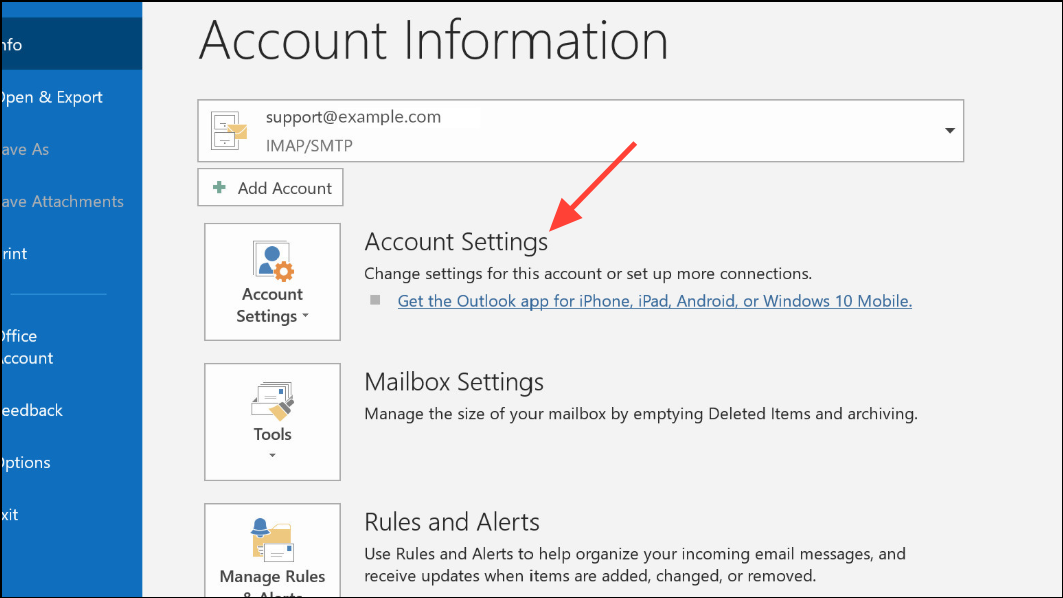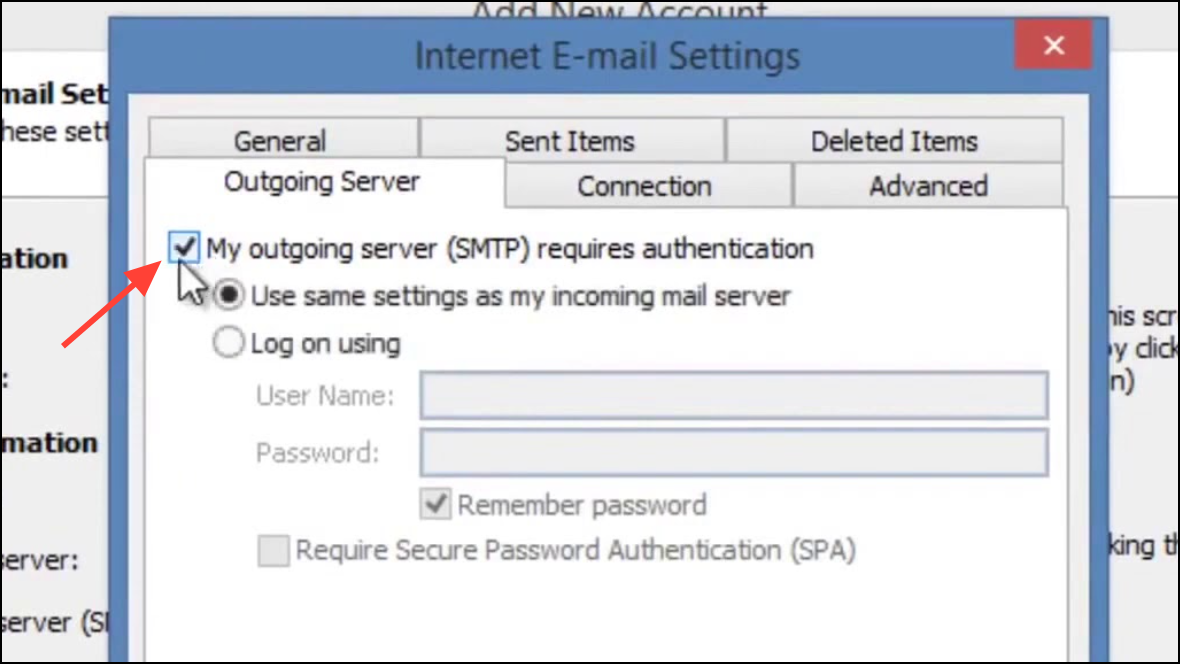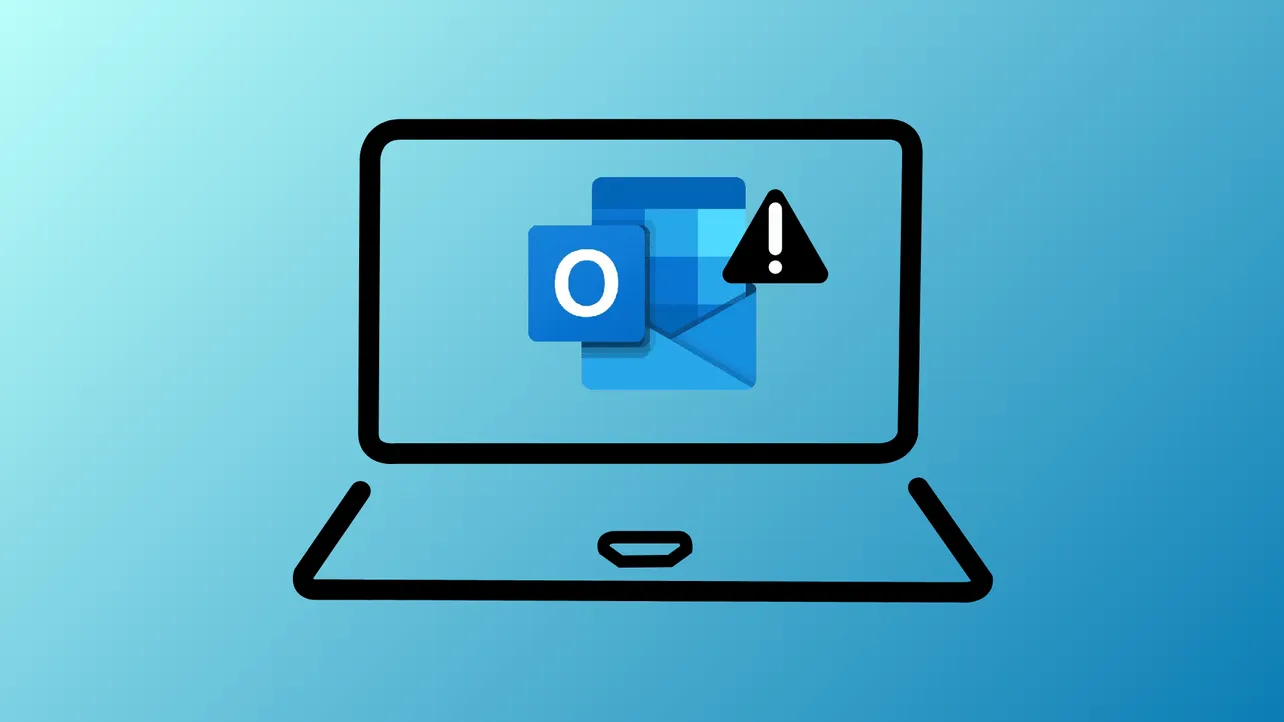Outlook displays error code 0x800CCC67 when it fails to send emails, often showing messages like The server responded: 421 Cannot connect to SMTP server. This issue can block outgoing mail and disrupt business or personal communication. The error usually points to problems with SMTP configuration, security software interference, or damaged email files. Addressing these root causes restores Outlook’s ability to send messages without interruption.
Check and Correct SMTP Server Settings
Step 1: Start Outlook and go to the File tab, then select Info > Account Settings > Account Settings again.

Step 2: In the Email tab, choose your email account and click Change.
Step 3: Review the Outgoing mail server (SMTP) address, port number, and authentication settings. Confirm these details match your email provider’s documentation. Common SMTP ports are 25, 465 (SSL), and 587 (TLS). Some providers require authentication for outgoing mail—ensure My outgoing server (SMTP) requires authentication is checked if needed.

Step 4: Click Next and then Finish. Test sending an email to verify the fix.
Temporarily Disable Antivirus and Firewall Software
Step 1: Open your antivirus or firewall application. Look for options to disable protection or turn off email scanning features temporarily.
Step 2: Disable the software and close Outlook completely.
Step 3: Reopen Outlook and attempt to send an email. If the error disappears, your security software is likely blocking SMTP traffic. Consult your antivirus documentation for how to allow Outlook or its ports through the firewall. Remember to re-enable your protection after testing.
Some antivirus programs, such as Avast or Microsoft Security Essentials, have been reported to block outgoing mail or flag certain email attachments. If disabling the antivirus resolves the issue, consider adding Outlook to the allowed list or adjusting the software’s email protection settings.
Adjust Server Timeout Settings
Step 1: In Outlook, go to File > Account Settings > Account Settings. Select your account and click Change, then More Settings.

Step 2: Go to the Advanced tab. Increase the Server Timeouts slider to at least 5 minutes. This gives Outlook more time to communicate with the SMTP server, which can resolve errors caused by slow server responses or large attachments.
Step 3: Click OK, then Next and Finish. Test sending an email again.
Repair Corrupted Outlook Data Files (PST/OST)
Step 1: Close Outlook. Locate the ScanPST.exe tool, typically found in the Microsoft Office installation directory.
Step 2: Launch ScanPST.exe and click Browse to select your main Outlook data file (.pst or .ost).
Step 3: Click Start to scan for errors. If issues are detected, follow prompts to repair the file.
Step 4: Reopen Outlook and check if the error persists. If the problem continues, consider creating a new Outlook profile via the Windows Control Panel's Mail settings or use a professional PST repair tool for severe corruption.
Review Internet Connection and Email Server Status
Step 1: Open a web browser and try to load several websites to confirm your internet connection is stable. A weak or intermittent connection can prevent Outlook from reaching the SMTP server.
Step 2: Visit your email provider’s status page or social media channels to check for reported outages or maintenance. If the provider is experiencing issues, wait until service is restored before troubleshooting further.
Reinstall or Repair Outlook Application
Step 1: Go to the Windows Control Panel and select Uninstall a program. Find Microsoft Outlook or Office Suite, right-click, and choose Repair or Uninstall.
Step 2: If you choose to uninstall, follow prompts to remove Outlook, then reinstall from your original installation media or Office 365 portal.
Step 3: Launch Outlook, set up your account again, and test email sending.
Additional Tips and Cautions
- Some ISPs block SMTP traffic on port 25 to prevent spam. If you cannot connect to your SMTP server using port 25, try ports 465 or 587 with the correct encryption method (SSL/TLS) as your provider specifies.
- Always back up your PST files before running repairs or making major changes to your Outlook configuration.
- If disabling antivirus or firewall software resolves the issue, do not leave your system unprotected. Adjust settings to allow Outlook, then re-enable security features.
- Check for malware using a reputable scanner if you suspect infection, as malicious files can interfere with email functionality.
Fixing Outlook error 0x800CCC67 restores reliable email sending by correcting configuration, repairing files, or resolving network and security conflicts. Regularly updating your settings and maintaining backups helps prevent future disruptions.


